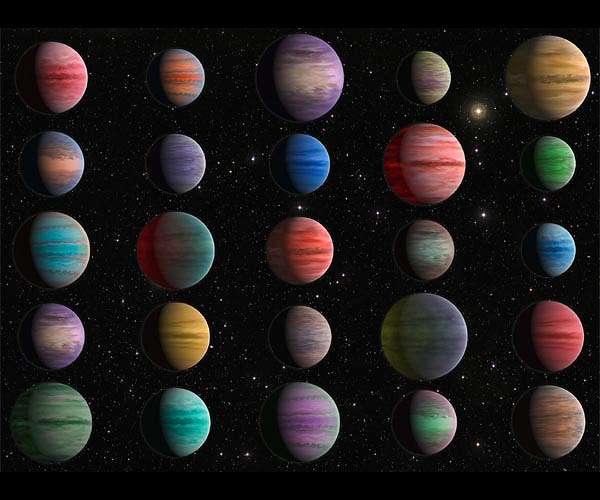
Los Angeles, CA (SPX) Oct 15, 2025 — What do you do when faced with an unexpected astronomical phenomenon, a dataset of planets light-years away, and theoretical models that fall short? For Diego Munoz, an assistant professor at Northern Arizona University’s Department of Astronomy and Planetary Science, the answer is clear: develop new models.
Supported by the National Science Foundation and colleagues at Indiana University Bloomington, Munoz is set to lead a three-year investigation into the formation of eccentric warm Jupiters. These gas giants, located outside our solar system, exhibit peculiar and unprecedented oval-shaped orbits.
By 2028, Munoz aims to unravel how these planetary anomalies formed and explore their potential influence on the creation of our solar system. “The variability of extrasolar planets is just enormous,” Munoz remarked. “Extrasolar systems can look like ours or be entirely exotic. We want to understand the extremes and how average our solar system is.”
The Enigma of Eccentric Warm Jupiters
Warm Jupiters have long puzzled scientists. Initially believed to form like hot Jupiters, which are similar in mass and size but closer to their stars, new data suggests warm Jupiters may have distinct origins. Unlike hot Jupiters, which can orbit in various orientations, warm Jupiters align closely with their stars’ equators. This alignment, especially in eccentric orbits, defies existing planet formation models.
Munoz plans to expand the sample of eccentric warm Jupiters using NASA’s Transiting Exoplanet Survey Satellite. “The data tells us that warm Jupiters are not just the tail end of hot Jupiters,” Munoz explained. “We need to determine if these are rare anomalies or if we’ve overlooked a significant physical process.”
Exploring Theories and Hypotheses
Understanding the formation of eccentric warm Jupiters could reveal hidden truths about our solar system’s evolution. Munoz is exploring several hypotheses:
- Companion Planets: These may alter orbits without misaligning them relative to their stars’ equators. While varying eccentricities and inclinations are understood, having one without the other is not easily explained.
- Gaseous Nebulas: Interaction with their surroundings during development might have unforeseen effects, potentially altering planet formation mapping.
- Star Influence: Stars, as fluid bodies, can develop internal waves that extract energy from a planet’s orbit. Munoz believes this could explain the alignment of warm Jupiters with their host stars’ equators.
The correct theory remains a mystery, but Munoz is determined to solve it using advanced modeling techniques. “I’m a theorist, so I work on models using heavy-duty computers, pencil-and-paper calculations, and anything in between,” Munoz said. “We don’t have a model that predicted this to begin with, so we’re going to dive into the most creative ways to tackle this problem.”
Looking Ahead: The Future of Planetary Science
Next year, Munoz plans to recruit a graduate student skilled in creative problem-solving to assist with his study. Meanwhile, his research into the host star hypothesis shows promise, and he anticipates publishing his findings soon.
This investigation into eccentric warm Jupiters could significantly impact our understanding of planet formation, offering insights into the processes that shaped our solar system and countless others. As Munoz and his team forge ahead, the astronomical community eagerly awaits the revelations that may redefine planetary science.





